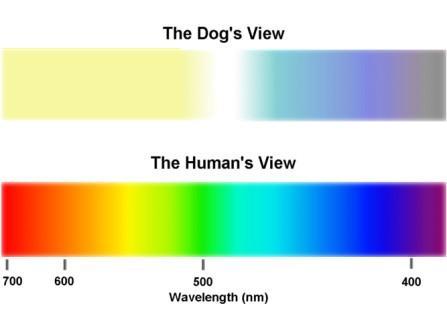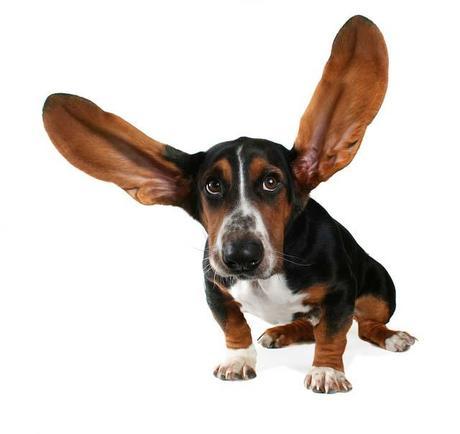
A dog’s nervous and sensory systems are essential to his health and well-being. Perceptions and reactions to his environment are dependent on his senses – movement is controlled through the central nervous system; and the endocrine system controls his patterns of behavior. Like humans, the five bodily senses through which dog perceives his surroundings are:
- smell
- sight
- hearing
- taste
- touch
Dog Senses: Smell
A dog’s primary sense is his sense of smell, as it’s essential in relation to his sex life and hunting for food and water. The area in a dog’s nose for detecting scent is nearly 37 times larger than that in humans, and therefore is approximately 100 times more powerful than a human’s.

The parts of the brain that process signals coming in from the nose are far greater in size and complexity in a dog than are the corresponding parts of the human brain.
A special organ in the roof of the mouth – the vomeronasal organ – “tastes” certain smells to help the dog analyze and react to them faster. When the dog is using this organ, he will draw in mouthfuls of air appear to be “tasting” it.
Dog Senses: Sight
Canine vision is inferior to humans during the day, but is superior at night. Dogs do see colors, but not as distinctly as humans, and their peripheral vision is better than ours.

- image source
In addition to the upper and lower eyelids, there is a third eyelid – the nictitating membrane – haw- which is comprised of a thin sheet of pale tissue tucked away in the corner of the eye. Its function is to help remove dust and dirt from the surface of the eyes by moving across it during any inward movement, and also to help keep the eyeball moist and lubricated.
The dog’s eyes are also used to communicate – starting eyes indicate threat, while “sad eyes” or looking away indicate submission.
Dog Senses: Hearing
A dog’s hearing is vastly superior to that of a human and he’s, therefore, more sensitive to sounds than we are – especially those at high frequencies which we can’t hear. Hence, the use of “silent” dog whistles.

- image source
A dog’s mobile ears help to pinpoint the source of a sound, since they can be directed towards it. As well as hearing sounds, a dog’s ears are also used to communicate via their position to indicate aggression (back), interest (pricked) and submission (down).
Dog Senses: Taste
Whereas humans have taste buds situated on the tongue, the canine sense of taste is thought not to be as well developed – only about one-sixth as sensitive as that of humans.

Dog Senses: Touch
Dogs use their noses, mouths, and paws to examine objects, after first checking them out by smell. The skin is the main touch receptor, and different breeds and types of dogs are more touch-sensitive thatn others.

Dogs that have been well handled since puppy-hood tend to shy away from being touched in sensitive areas, such as the feet, mouth, head, between the hind legs and tails.

